#texture generation
Explore tagged Tumblr posts
Text
Genetica 4.0 Animated Textures
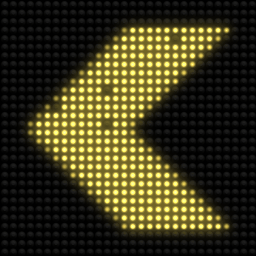
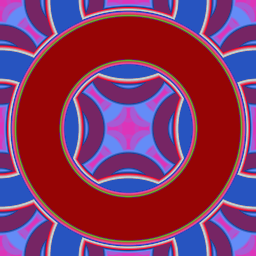
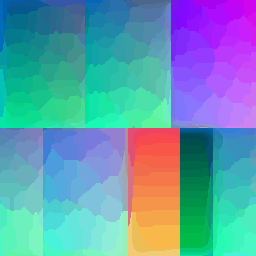
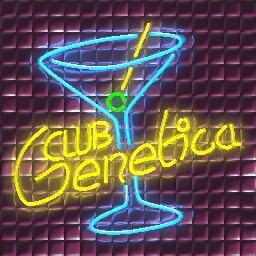
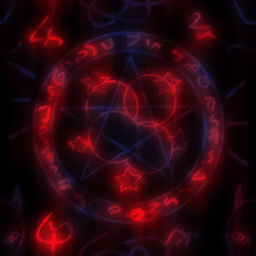
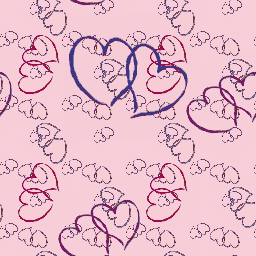
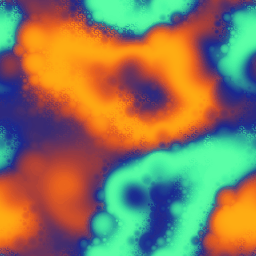


Some default animated seamless textures dating from around 2007 - 2008 that are included in the demo for Genetica 4.0 (Pro Edition), which is an obsolete seamless texture generation software that you can no longer buy keys for (these were rendered on a free trial, and on a totally unrelated note you have the ability to do something really funny if you brought the software before Spiral Graphics went defunct) These seamless animated textures are all credited either to Spiral Graphics (the now defunct company that created Genetica), or some mysterious user known only as Sethren who contributed (their?) textures at June 14th 2007.
#not my art#nma#gif#animated#texture generation#tiles#seamless#old#early 2000s#satan#demon#neon#neon sign#heart#hearts#textures#genetica#looping#pentagram#flashing#flashing lights
35 notes
·
View notes
Text
It is the middle of a Sunday afternoon. You have nothing on, and aren't expecting visitors, deliveries or post.
Unexpectedly, there is a knock at the door.
you are greeted by...... her
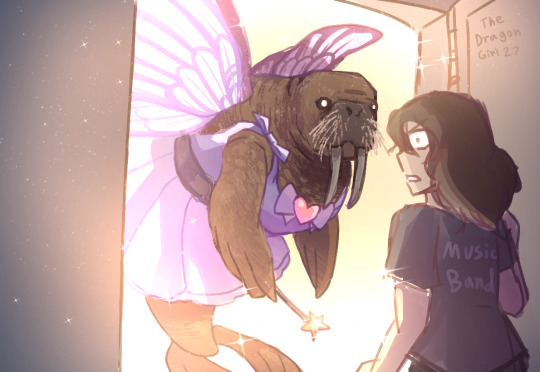
#fairy vs walrus#walrus vs fairy#walrus#why is this so well textured its fucking shitpost art#like why cant i pull this off in my normal art it had to be the walrus fairy#meme art#things that would give people outside of tumblr a heart attack#maybe#has the fairy vs walrus debate breached containment yet#also that generic girl i drew ended up looking a lot like how i look irl (yes i look like an npc)#also that door is unreasonably large but i needed you to be able to see the walrus in all her glory#i wanted it to be bigger so you could see her wings#fairy walrus#dragon draws creatures
25K notes
·
View notes
Text
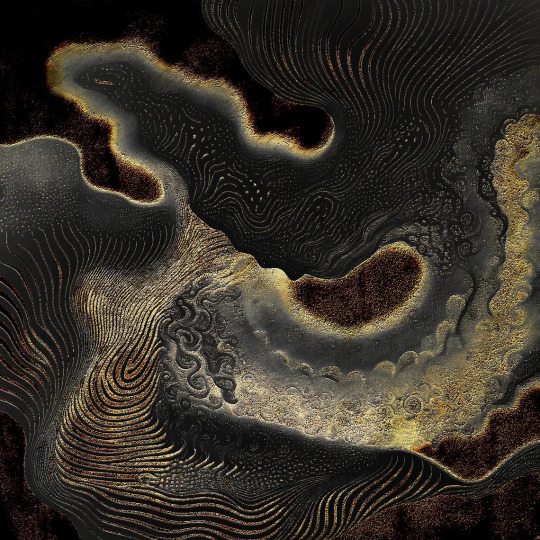
Preface to a dream, Alessandra Casini, 2023
17K notes
·
View notes
Text
Mastering Leonardo AI: A Comprehensive Guide to this Powerful Image Generation Tool
Introduction to Leonardo AI: Access and Understanding Basic Features
Those who journey into the world of digital art, beginners and professionals alike, are often seeking tools that can amplify their creative expression and simplify the creative process. Leonardo AI is such a tool and is rapidly making an impactful stride in the artistic arena. In this comprehensive guide, we will dissect Leonardo AI, highlighting the tool's exceptional features and capabilities. Inspired by one of the revered polymaths of the Italian Renaissance, Leonardo da Vinci, Leonardo AI embodies the union of art and technology, holding the potential to transform the way we create and perceive visual art. While it may seem intimidating at first glance, accessing and getting to know the platform can be a rewarding venture for anyone with a desire to explore image generation at its best. To access Leonardo AI, visit their official website as per the instruction provided in the YouTube tutorial referenced for this guide. On the homepage, you'll find an inviting button that reads 'Start using Leonardo'. This button is your gateway to entering a realm of innovative image generation. Upon clicking, you'll discover a stunning and intuitive interface that is remarkably user-friendly, even for those with limited technical expertise. The accessibility of Leonardo AI's platform makes it an ideal choice for artists, designers, and entrepreneurs who are keen on exploring the capabilities of AI in image generation. As this guide intends to offer you a deep understanding of Leonardo AI, we will delve extensively into various features and models available on Leonardo AI, predominantly showcasing a range of realistic and artistic styles you can play around with. For beginners stepping into digital art creation or image generation, this tool stands out as an excellent option. With a plethora of models to test, you will get the chance to experiment with different prompts, refine your creative skills and bring your artistic vision to life. One exciting feature of Leonardo AI that underscores its community spirit is the 'Community Feed'. From novices to seasoned professionals, Leonardo AI houses a community of avid users, continuously creating and sharing their work. By exploring this feed, you can gain inspiration from a variety of creations, recognize trends, and identify styles that resonate with your artistic aspirations. An added bonus for the creatively inclined is the option to create your own model based on a collection of images, introduced in the 'Training and Datasets' section. With this impressive feature, you can weave together a series of images, training the AI to generate output in your chosen style. This capability adds another level of personalization to your creations, ensuring your artistic voice shines through. To round out this introduction to Leonardo AI, let's briefly highlight the three main tools that will be your arsenal in this artistic endeavor. These consist of the AI Image Generation, AI Canvas, and Texture Generation. The AI Image Generation tool allows you to generate images from textual prompts. The AI Canvas is a platform to edit and add content to your images and finally, Texture Generation tool lets you create unique textures. In the chapters that follow, we will delve deeper into these tools, demystifying their functions and revealing tips and tricks to using them effectively. Keep in mind, Leonardo AI is as much a tool for novel experimentation as it is for accomplishing particular artistic goals. So let your imagination run wild and let Leonardo AI's capabilities guide your creative journey.
Exploring Leonardo AI's Suite of Tools: Image Generation, Canvas, and Texture
Now that we've highlighted the basics of Leonardo AI, it's time to dive into the heart of this platform's capabilities. Leonardo AI's suite of tools features AI image generation, AI canvas, and texture generation - each providing unique opportunities to elevate your creations. The tool that draws immediate attention in Leonardo AI's repertoire is the AI Image Generation tool. This tool is nothing short of revolutionary in the realm of digital art creation. The AI Image Generation tool transforms simple textual prompts into stunning visual representations. It might feel like magic, but it's pure technology at work. It brings your artistic vision to life with unprecedented ease and versatility. Picture this: you input the text "an autumnal landscape in watercolors," and Leonardo AI's tool generates a breathtaking image capturing your prompted scene in vivid detail. To utilize AI Image Generation, you simply navigate to the corresponding page on Leonardo AI's platform. Here, you are instructed to input your prompt in a provided text box. Prompt input is not limited to descriptions of scenes or objects. It could also contain instructions for stylistic approaches that the AI should consider while generating the image. With prompts input, your next step is to select the modeling option that best suits your requirements. Leonardo AI offers an array of models to choose from, enabling a wide range of aesthetic outcomes. There's a lot more to explore within the AI Image Generation page. A unique feature offered is a daily token limit and coin system. As a user, you need to be mindful of the number of tokens you consume based on the complexity of the image prompts and models you select. The coin system helps manage resource allocation, ensuring all users get fair access to AI's creative capabilities. Your journey of discovery within Leonardo AI's suite doesn't end here. An exciting tool that allows further refinement of your generated images is the AI Canvas tool. This tool is an in-built editor where you can make adjustments to your generated image or even add new elements to it. Think of AI Canvas as a finishing school for your AI-generated art, where you can fine-tune and perfect your creations. It is an artist's playground where you can play around with different features to enhance your images. Whether it's adjusting the brightness or contrast, cropping the image, or tweaking the color balance, the AI Canvas is your tool to make the final creative decisions. The third tool at your disposal is Leonardo AI's Texture Generation tool. This tool can generate distinct and intricate textures based on your prompts, further expanding the possibilities for your image creation. By adding unique textures to your images, you can imbue a sense of realism or even impart a stylistic effect. From capturing the grain of a tree bark or the roughness of a mountain range to creating an alien skin texture, the possibilities of texture creation are endless. Collectively, these tools offer a robust platform for any digital art creator or image generator. As you continue to explore and experiment with these tools, you'll find that they equip you with the capability to create remarkable outputs. Whether you are a novice artist, a creative professional, or an entrepreneur looking to experiment with digital images, Leonardo AI's suite of tools is poised to take your creative endeavors to new heights.
A Deep Dive into Leonardo AI’s Image Generation: Prompt Inputs, Models and Output
Having extensively explored Leonardo AI's suite of tools, it's time to dive deeper into its stand-out feature, that is, Image Generation. This chapter takes you through the core of Leonardo AI's Image Generation process: Prompt Inputs, Models, and Output. Before plunging into the depths of image generation, it's critical to establish a foundational understanding of the process that facilitates the conversion of textual prompts into visual illustrations. At its core, Image Generation is an AI-driven process that interprets the semantics of your input prompt, visualizes it, and renders generated images with impressive accuracy and creativity. The sea of creativity gets its first ripple when you input your prompt. This prompt can reinforce various ambitious creative expressions and can be as simple, abstract, or detailed as you like. For instance, you could use a simple prompt like "a serene sunrise," or something more specific like "a castle in the Scottish highlands at dawn." Leonardo AI's AI is flexible in interpreting your prompts, offering a wide array of visual outputs based on the information you have given. The models offered by Leonardo AI work backstage in this creative production, translating your words into images. Each model has been trained on a different dataset, allowing them to generate a wide variety of stylistic results. For instance, you can select from models that have been trained to produce realistic imagery or those that lean towards more cartoonish or abstract styles. On that note, while evaluating the models at Leonardo AI, keep in mind that experimenting with different models often leads to diverse and sometimes unexpected results. Such experimentation broadens your awareness of the tool's capabilities and helps you gain a more nuanced understanding of the impact of each model on your final output. The final leg of this deep dive is the output generation. Once you've selected a model and input your text prompt, Leonardo AI focuses its computational power and creative intelligence to provide you with a unique image. The generated image carries the narrative and style encompassed in your prompt, represented in the chosen aesthetic delivered by the model. Another praiseworthy feature Leonardo AI integrates into this process is a history of your generated images. This repository allows you to revisit previous iterations of your artistry, compare different outputs, and decide upon any adjustments or revisions in future creations. As previously mentioned, Leonardo AI is all about experimentation - this is precisely what harnesses the tool's immense power. Combining different prompts with various models allows you to create unique outputs that challenge conventional image generation norms. With time, as you become more familiar with how different prompts are interpreted by the different models, you will be able to better shape the AI's creations to align with your creative vision. Every great artist knows that exploration is the heart of creativity. That’s exactly what Leonardo AI offers - an endless landscape of creative exploration.
Leveraging Leonardo AI: Existing Image References and Creative Experimentation
With a solid understanding of how Leonardo AI's Image Generation works, it's time to take things a step further. Creative expression often involves more than just creating; it's also about reshaping, experimenting, and sometimes even re-imagining. Leonardo AI allows you to do just that by integrating existing image references into the generation process. Referencing existing images opens a world of possibilities, giving you the power to guide the AI's creativity based on established visual cues. By leveraging this feature, you can give further direction to the AI regarding stylistic nuances, object placements, color palettes, or overall thematic representation. Essentially, image references serve as blueprints, providing more context to the generation process. To use this feature, simply select an image using the file uploader on Leonardo AI's platform, adjusting the strength of the reference image's influence to guide your output. This adjustment is key to striking a balance between replicating the reference and maintaining the uniqueness of the image being generated. Thoughtfully leveraging image references can result in more than just aesthetically pleasing results. It can be a powerful tool in enhancing the expression of your ideas. For instance, referencing a Van Gogh's painting could guide the AI model's brush strokes, color schemes, and overall approach to image generation. All without cloning the original work, but rather applying its stylistic qualities to your new creation. Creative experimentation is at the heart of leveraging Leonardo AI to its maximum potential. While using an existing image as a reference, you are encouraged to adjust the strength of the influence according to your creative vision. Remember, every iteration offers a new learning experience. Revisiting your creations, comparing results, tweaking your prompts, or switching up your images will only deepen your understanding of the workings of this tool, hence, shaping your expertise as an AI artist. In addition, utilizing image references can greatly influence style transfers. Imagine applying the aesthetics of a classic painting to a modern cityscape, or imposing an abstract style onto a naturalistic image; the options are boundless. To sum it up, by leveraging Leonardo AI's feature to utilize a reference image, you greatly broaden the range of outputs you can produce. It's all about trial and error, risk and reward, just like any other form of artistic expression. So, keep exploring, experimenting and refining until you've crafted a visual masterpiece that's uniquely yours.
Advancing Skills in Leonardo AI's Canvas Editor: Achieving Artistic and Commercial Goals
In the landscape of digital art, image generation is only the first step. Adding your unique touch, refining the images, and adapting them to specific contexts are just as crucial. Realizing this, Leonardo AI brings you an additional component to advance your creative journey, the Canvas Editor. The Canvas Editor is a dynamic tool where you can manipulate generated images and add content, further personalizing your creations. This editing platform allows you to dive into each generated image and make changes tailored to your artistic or commercial prerequisites. Whether you want to remove elements, adjust colors, or integrate text, the Leonardo AI Canvas Editor provides all those functionalities. One major advantage of the Canvas Editor is how it aids in achieving consistency. For instance, if you are developing a series of images for a storybook or a comic, it's vital to maintain a consistent style, color palette, and character design throughout the series. With Canvas Editor, you can tune each image accordingly, ensuring a seamless flow across your series. Another strength of the Canvas Editor lies in its capacity to aid in commercial projects. You might be looking to create print-on-demand products, logos, or stickers; the Canvas Editor is your one-stop solution. This tool gives you the creative liberty to turn simple images into commercial products with value in the market. By integrating text or personalizing the color palette according to the brand's guidelines, you can convert an AI-generated image into a professional product suitable for marketing campaigns, packaging designs, web designs, or print media. In addition to these, the Canvas Editor can be instrumental in creating characters. With Leonardo's Image-to-Image generation, you can generate a number of images and then use the Canvas Editor to maintain consistency. You can refine facial features, tune the color palettes, and maintain uniformity in style across all the images. To achieve the best results, take your time while experimenting with the Canvas Editor. You might discover that making minor changes to elements such as saturation, contrast, or exposure can drastically affect the overall impact of the image. You can also play around with different layers, adding various elements for depth and complexity. Mastering the Canvas Editor of Leonardo AI not only aids in achieving your artistic goals but also equips you with a handy skill-set for commercial endeavors. So, step into the virtual studio and get creative with the Canvas Editor. It's the journey of exploring, experimenting, and creating that makes the final masterpiece worth all the effort.
Utilising Leonardo AI for Business: Creating Characters, Products and More
Leonardo AI, while undeniably a haven for artists, is more than just a tool to create impressive digital art. Its capacities extend far beyond, offering a wide array of business applications. With Leonardo AI, businesses can produce stunning visual content, create unique products, and even develop captivating characters, all while saving significant resources and time. Visual content is an essential component of any successful marketing strategy. Leonardo AI greatly simplifies the process of creating high-quality visual content. Whether it’s for social media, advertisements, product descriptions, or website branding, Leonardo AI’s AI-powered image generation allows businesses to create in-house visual content quickly and affordably. The ability to create products based on AI-generated images presents numerous potential business opportunities. For instance, print-on-demand businesses can leverage AI-generated graphic designs, creating unique products like T-shirts, coffee mugs, stickers, and more. By consistently creating and adding new designs using Leonardo AI, businesses can keep their offerings fresh and engaging. Moreover, Leonardo AI's powerful image generation and Canvas Editor allow businesses to create a range of merchandise with a distinct sense of uniformity and brand identity. By customizing generated images to fit their brand guidelines, businesses can effectively reinforce their brand image in a creative and visually appealing manner. For businesses in the entertainment industry, Leonardo AI offers unique opportunities for character creation. It can be used to generate a wide range of character images based on specific prompts. The consistency maintained through the Image-to-Image generation and subsequent refinement with the Canvas Editor can lead to a well-designed and standardized array of characters. These generated characters can be used in comics, animated videos, games, and more, offering visually appealing assets that elevate user engagement and experience. However, capitalizing on Leonardo AI's potential doesn’t end with creating characters and products. Exploring how it can be integrated into various business processes can further amplify its benefits. For instance, designers can use the AI-generated images as a creative starting point, saving them from the laborious task of creating base designs from scratch. In conclusion, Leonardo AI offers businesses a remarkable tool to boost their creative capabilities, broaden their product offerings, and achieve their commercial goals. With a little creativity and exploration, businesses can unlock the vast potential of Leonardo AI and reap significant benefits.
Understanding Leonardo AI Subscription Plans: Benefiting from Extra Tokens and Features
Just like any other feature-rich platform, Leonardo AI utilizes a subscription model to provide access to its extensive range of tools and features. Through various subscription plans, you can utilize extra tokens which elevate the functionality of the platform, providing additional benefits and added flexibility. A fundamental part of Leonardo AI's setup involves a daily token limit and a whimsical coin system. Tokens essentially act as keys to unlock the capabilities of the platform. They determine the number and complexity of images you can generate based on your supplied prompts and chosen models. The more tokens you have at your disposal, the more you can generate and experiment with your creations. Leonardo AI offers different subscription plans tailored to fit the varying needs of its user base. From individual artists playing around with digital art for the first time to creative professionals and commercial enterprises seeking extensive use of the platform, there's a subscription plan designed for everyone. Each subscription plan offers a specific number of tokens and access to certain functionality. Choosing the right plan depends largely on your usage patterns and goals. If you're an occasional user looking to familiarize yourself with AI-generated art, a basic subscription plan could suffice. However, if you're a professional artist or a business aiming to integrate Leonardo AI into your daily workflow, a higher-tier subscription plan offering additional tokens might be a more practical choice. Advantages of choosing a subscription plan are multifold. More tokens mean more freedom to experiment with different prompts and models, thereby broadening your learning curve and overall usage of the app. Higher-tier plans also tend to come with added features or advanced options that can further elevate your Leonardo AI experience. As with any other subscription service, it's important to carefully evaluate each plan, consider your usage patterns and requirements, and adopt a subscription that delivers the greatest value to you. Remember, it's not just about getting more tokens or access to extra features; it's also about ensuring you make the most of the incredible solution that is Leonardo AI. With the right subscription plan in hand, the world of AI-generated digital art awaits your exploration.
Tips and Tricks for Leonardo AI: Maximizing the Tool for Better Outputs
Diving into the world of Leonardo AI is an exciting journey filled with discovery and creativity. But, as with any tool, getting to know the tips and tricks can make your exploration even more rewarding. Following are a few insights that will help you utilize Leonardo AI to its fullest potential. The first tip revolves around the very essence of Leonardo AI, the prompt. Make sure your prompts are clear and descriptive. While it's okay to be abstract or imaginative, providing a little more detail can help the AI generate a more accurate image. For instance, instead of 'cat', you could use 'a blue-eyed cat sitting on a rug'. The more specific your prompt, the more control you have over your output. Another tip relates to using the whole page and leveraging the available props. Use the AI canvas area fully and try different arrangements of objects. The resulting complexity can often lead to more interesting and visually appealing results. Remember, the output is not limited to what is visible on the canvas. You can zoom, pan, or crop to focus on the most compelling part of your image. One of the most impactful tips is to experiment with different models. Each model interprets your prompts differently, leading to varied results. By experimenting with each model, you can learn their strengths and use that knowledge in your creative process. So don't hesitate to test out multiple models and see which one resonates the most with your style. When using the feature of existing images as a reference, it is beneficial to experiment with different strengths of the reference image's influence. Depending on your artistic vision, you might want the reference to serve as a delicate hint or a prominent guide for your output. Adjusting the strength of influence can help you achieve the desired balance. Lastly, make sure to regularly explore the Community Feed. Seeing the creations of other users is not just inspiring, it also allows learning. By exploring the community's outputs, you can pick up tips and gain inspiration for your own creations. You might find certain combinations of prompts and models that you haven’t thought of before. The journey with Leonardo AI is all about learning and growing. For every new experiment, there's a possibility of creating something distinctively captivating. So, unleash your creativity and let Leonardo AI be the tool that opens up new horizons in your artistic adventures.
#Leonardo AI#Image Generation Tool#Artificial Intelligence#AI Canvas#AI Image Generation#Texture Generation#AI for Business#Print on Demand#AI Tutorials#AI Tools#lucky clover's blog#lucky clover
0 notes
Text

FINALLY FINISHED THEM!!!!
after like 34 hours of drawing my illustration of pearl n etho fighting in the ballroom arena is done!!! hope u guys like it!!
#sun art#ethoslab fanart#hermitcraft fanart#hermitcraft#pearlescentmoon#ethoslab#ummmm little fun headcanons! etho is a breeze hybrid thats why his smoke is a different colour#pearls ears and tail are crystal decorations and for big tails its fashionable to show off little plants inside#i wanted to do the water elevators as big glass tubes that shot people upwards#annnd the floor was so green i couldnt resist adding in a flowering moss carpet#my other headcanon for the image is um. i was conceptualising solarpunk outfits as very crocheted or knitted? especially formalwear#so i wanted to do that with this. but i accidentally erased the texture and got too tired to redo it all lmao#the corset is also cause pearl Knew they were gonna battle#so its like. light armour kind of? same reason shes got boots and leather gloves and the leggings for easy movement#in contrast ethos clothes r much more decorated and formal#and hes got some impractical geta#i based his robe and his coat especially off ainu clothing since i wanted him to have a very different vibe from like. joel#who i imagine in general japanese traditional clothing (modified for cyberpunk) and who i wanted to give a very different silhouette#the coat specifically is also a salmon skin coat!! which i thought was a stroke of great luck since he wanted the fishing rod arena#pearlescentmoon fanart
532 notes
·
View notes
Text




trying to de-ab gale and astarion because i refuse to believe they'd actually look like that. Also it just looks better (<- humble opinion). astarion's is a little rougher because i've only edited the normal and not the. whatever the hell the other two are like I've started doing with gale (the way this game handles textures confuses me) But if anyone wants it i probably will upload this as a mod in a little while
EDIT: now on nexus mods rejoice
#baldur's gate#bg3#they're not even really gonna have their shirts off in my playthrough but just knowing they're under there freaks me out#i also might edit wyll's / the body textures in general just as an option or like. tone the definition down a little bit at least#★
8K notes
·
View notes
Text
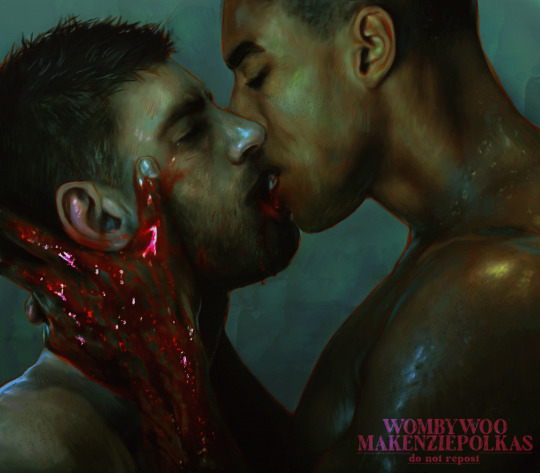
thirst 🩸
#my art#ocs#original character#quinncent#oc: quinn lacey#oc: vincent craft#qv art#tw blood#I'm so pleased with the texture here#mmm...juicy...#was gonna make this a patreon post but I'm feeling generous#enjoy the debauchery~
923 notes
·
View notes
Text


GEORDI💛DATA AND DATA💙GEORDI
#in case u didn't know#trying to use... more colours... and textures... and looser line work...ahhhhhh#star trek#tng#star trek tng#the next generation#st: tng#lieutenant commander data#data soong#geordi laforge#geordi la forge#daforge#data x geordi#brent spiner#levar burton#ENOUGH. enough tags. i'm thleepy#byeeee
746 notes
·
View notes
Text
tapped into my inner bob ross for these 😱

737 notes
·
View notes
Text

Sentient Amalgamation
#generation loss#generation loss fanart#ranboo fanart#ranbooart#ranboo#genloss#generation loss the social experiments#genloss fanart#genloss tse#traditional art#acrylic on canvas#acrylic painting#now..let me tell you about this pain of a piece#I absolutely adore the final product!#but that wasn’t before I spent the first few days on it back in October 2024#it was going great on the first few layers of paint#then I started to detail it more and it just lost its texture and looseness#and I hated it…so I abandoned it for over a month#then revisited it early December 2024 to gesso over two thirds of the canvas#(the only thing that was kept was the one person subject you see in the final piece)#and then left it sitting for another week while I figured out what I wanted to do with it#and finally#FINALLY#figured it out and MMMMWAH I love it!!!#and here’s my final painting and final piece of 2024#weathereraart
350 notes
·
View notes
Text
Honestly man. Do you really think you wanna be this wicked stone texture?
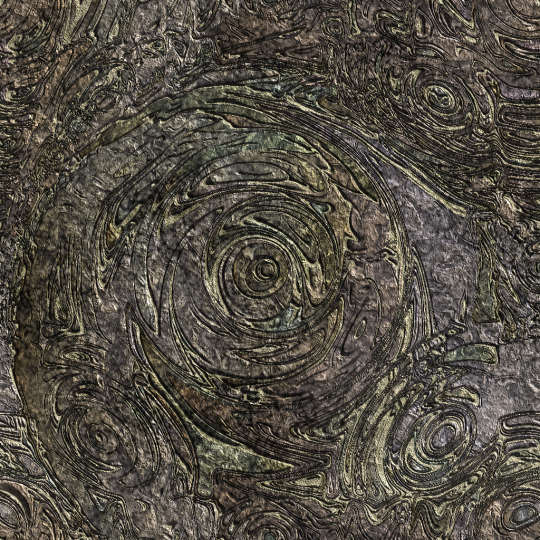
5 notes
·
View notes
Text
The Amazing Digital Circus gang (N64-ish style)
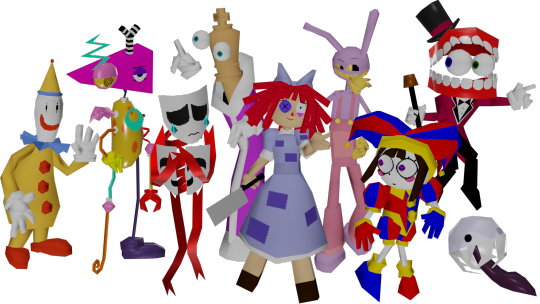
I've still got Sailor Moon fanart plans but my secondary hyperfixation for this new series is still going strong. UPDATE: I made Queenie and some of the other abstracted characters, too! (link)
#I didn't technically stick to real N64 limitations (other than 32x32 textures) just the general aesthetic#the amazing digital circus#tadc#tadc fanart#Pomni#Ragatha#Jax#Kinger#Gangle#Zooble#Caine#Bubble#Kaufmo#tadc pomni#tadc ragatha#tadc jax#tadc kinger#tadc gangle#tadc zooble#tadc caine#tadc bubble#tadc kaufmo#n64#low poly#3d model#blender#ragatha's hatchet#I hope that hatchet comes back in the series and not just the meet the gang promo#I hope she uses it on Jax#don't worry he deserves it
3K notes
·
View notes
Text
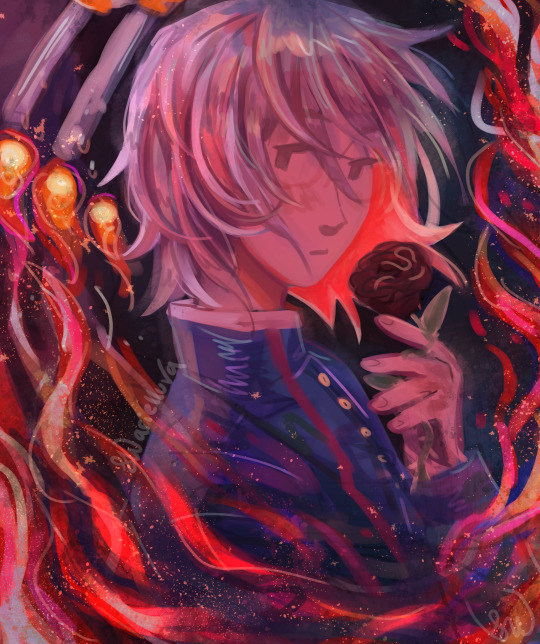
its just a burning memory
(version without extra effects/textures under cut)
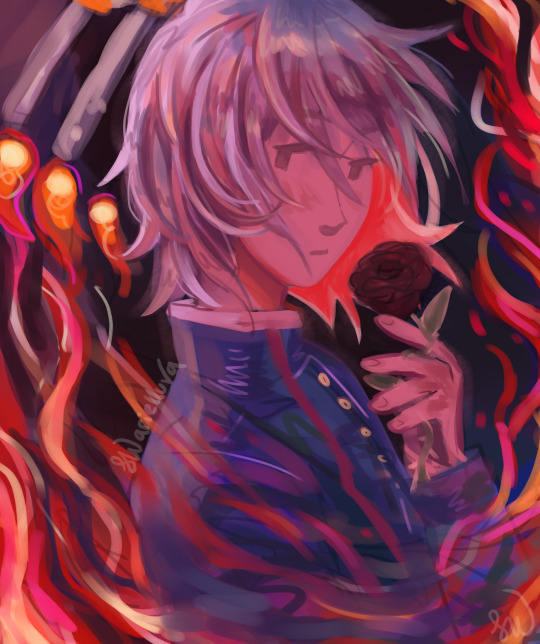
#my art#revolutionary girl utena#rgu#mikage souji#souji mikage#IM SORRY I CANT RESIST PUTTING EATEOT REFERENCES IN THE CAPTION. I CANT NOT POST MIKAGE WITHOUT ONE.#anyway ^_^#i wanted to do a digital version of that sketchbook drawing i posted a few days ago. and also go crazy with the effects and stuff#i wanted it to look a little like. idk how to describe it. a little like a foggy memory#colors blurring together and whatever#anyway i think about mikage and whatever's wrong with him a normal amount. ^_^#i think his memory weirdness. as well as the memory weirdness in rgu in general. is very interesting#i need to study him#i do like both versions of this drawing hence why theyre both here#the one without the textures is closer to my usual art style but it was fun to mess around with different brushes and really layer that shi#2024
429 notes
·
View notes
Text

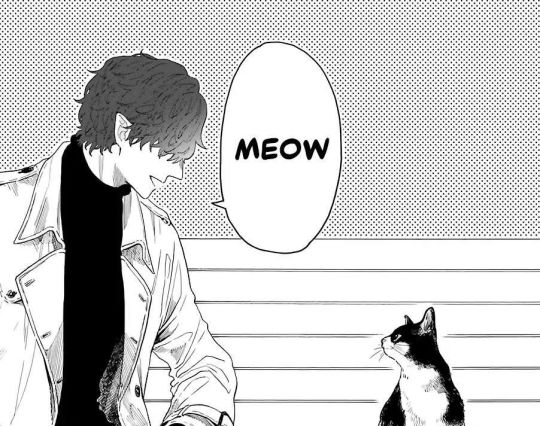
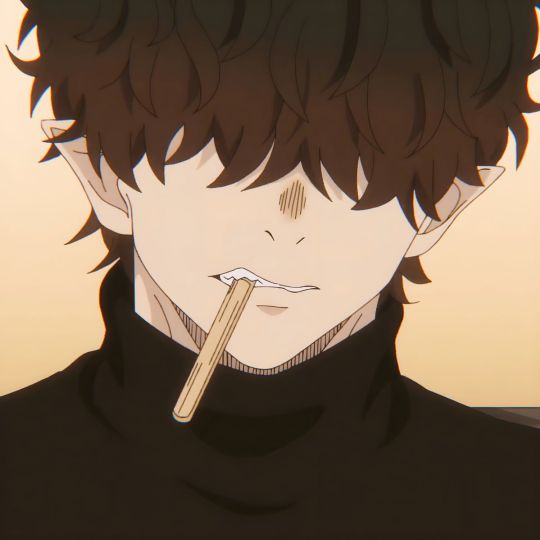
there's just something about this sopping soggy specimen of an alien that makes me want to suck his dick-
#lati speaks#i wanna write some smut for him so bad i think he should get some pussy bro idk i think it'd do him some good <33#he'd be hung af that dick is thick and huge and it's gonna be rearranging your guts just trying to fit inside <33#omg just imagine him having a monster cock when he's on the job it's gonna have ridges or any other textures nnmffhhh#it's so therapeutic and funny watching this big scary alien general being autistic about pandas <33#hearing this grown-ass alien man meowing at a cat in his deep voice will never not cease to do wonders for my brain#yes i know i'm late with the hype for this show shut up lemme have this sdjcjdskvbj#kyuujitsu no warumono san#mr. villain's day off#warumono x reader#warumono smut
311 notes
·
View notes
Text



character designer beats baldur's gate 3
#why are the sleeves attached to the armscye of the jerkin#is the peplum of the jerkin attached to the main body or is it layered below the tailcoat-jerkin#ive decided to drop this whole ‘gale of waterdeep’ business it’s a bit pompous don’t you think#<= wears a jerkin-tailcoat with generous amounts of brocade (or jacquard? the texture isn’t super embossed)#weekend project#baldur’s gate 3#scribbles#my art
215 notes
·
View notes
Text

OZYMANDIAS ♚ God of Rebirth, Second Chances & the Shadowfell
in the final session of our DnD game my paladin temporarily ascended to godhood in order to help create a new plane (the Shadowfell!). even though he ended up relinquishing his divinity, it was fun to think about what he'd be like as a god.
I imagine past iterations of himself would appear as ghostly after-images over his shoulder. if you look too closely at his eye, you'll see potential future versions of yourself within...
[ko-fi] 🎨 [art instagram] 🎨 [bluesky]
#dnd#dnd art#paladin#dnd character#artists on tumblr#illustration#character design#oc: ozymandias#my art#voidhopping campaign#WELL this turned out to be an incredibly difficult piece to render#i didnt have a clear image of what i wanted i just knew it needed to be like. kinda rough and textured?? but i dont DO texture#so it was very challenging (plus rendering armour is challenging in general)#i hope it looks okay i really struggled with it ;___;#but im rlly glad i got this done. love my disaster paladin so much
135 notes
·
View notes